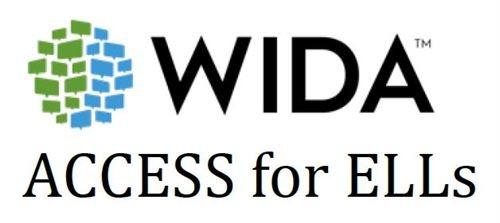

I created this unit plan using a mixture of my own created materials along with ACCESS prep tools found on the WIDA website: https://wida.wisc.edu/assess/access. All sources are cited in my document.
Please email jchamm@wsfcs.k12.nc.us with questions. Thanks!
Preparing 6-12th English Learners for Speaking/Writing ACCESS 2.0 -Joy Hamm
* indicates a hyperlink
WIDA launched the online version of the ACCESS exam in 2015, requiring English Learners (ELs) to develop digital literacy as well as English proficiency. While it may seem intimidating to balance the digital and language proficiency requirements, * WIDA’s ACCESS for ELLs 2.0 pdf provides tips to help ELs feel comfortable and confident when testing online. Students need multiple opportunities to practice using the computer and microphone headsets, starting from early fall and continuing until the ACCESS 2.0 testing window opens in February (for NC districts).
The following is a lesson plan using the Gradual Release model (Fisher &Frey, 2008). It is based on a 6-12th grade ESOL classroom with Long-Term ELs. This outline could be changed to fit other grades, language acquisition levels, and domains (reading, listening, writing, speaking).
I• Listen to Nina, the model student’s response. Nina’s example shows you the length and structure of your own response. You can even write down words Nina says if you want to remember to use that vocabulary (moreover, although, in addition…) in your speaking.
II• Think and form a response (on paper or in your mind) before you click the record button. Don’t click the record button until you have a response ready.
III• Speak loudly and clearly. Do not cover the microphone with your hand, mumble, or whisper.
IV• Try to talk the whole time the record timer is ticking (it will turn yellow when time is almost up). This helps you demonstrate your vocabulary and ability to connect ideas.
V• Do NOT click the stop button – it is okay to pause during your response, but once you hit stop, you cannot go back and add to your comments.
Level 3: “The students put water in the beaker.”
Level 5: “The students in science class are measuring a beaker of water as they prepare to dissolve sugar.”
Work through the rest of the speaking sample items together as a class and have students share level
1, 3, and 5 responses. To model more Level 5 responses, please read the blog post on elevating CALP discourse (Cognitive Academic Language Proficiency- Jim Cummins) using WIDA’s Performance Definitions.
While this doesn’t mirror the ACCESS 2.0 exam exactly, it allows students to look at practice prompts in the Google document, formulate their response using appropriate text structure vocabulary they’ve previously learned,practice using the microphone-headset. When students are ready, they will record their responses to one prompt using the SpeakPipe online recorder.
Next, students will save their SpeakPipe recording (follow prompts), copy the link, and share the recorded link with their teacher via Google Docs/email. The teacher can listen to each student’s link and use the Performance Definitions as a guide for providing detailed feedback.
It is important to begin preparing English Learners for the ACCESS 2.0 exam months in advance to increase confidence using strategies they have practiced over an extended period of time. If students have taken the ACCESS 2.0 a previous year, they should review their scores and create SMART goals using the Performance Definitions for * Listening/Reading and * Speaking/Writing .
Repeat steps 1-6 and change the domain to writing!
ACCESS 2.0 Writing test- ELs will complete three writing tasks. Tier A students have approximately 15 minutes for each task. Tier B/C students have 10 minutes for the first task, 20 minutes for the second, and approximately 30 minutes for the third. It is important to practice fast brainstorming activities and timed writing.
3. Direct instruction with student engagement: * Writing Test Tips from WIDA below
I • Use scratch paper or the in-test sticky note tool to organize your writing (at least for the last, long prompt).
II • Use the word banks, example responses, and sentence starters (content-specific vocabulary).
III • Use the Back button to re-read information or review your writing.
IV • Re-read your writing SLOWLY to fix any errors you find (singular-plural, past tense, spelling, punctuation, etc)
V • Re-read your writing a second time to check for complex sentences and transition words (however, therefore, because, since, etc)
IV • Re-read your writing a third time to check for a variety of vocabulary. (How many times did you use the same word? Can you think of a synonym/similar word?)
Citations: The hyperlinked online demo videos, speaking and writing test tips, ACCESS 2.0 sample items, and Performance Definitions are documents created by WIDA. Please visit “Preparing Students for ACCESS for ELLs- https://wida.wisc.edu/assess/access/preparing-students for WIDA’s documents and more!
Fisher, D. and N. Frey. Better Learning Through Structured Teaching: A Framework for the Gradual Release of Responsibility. Association for Supervision and Curriculum Development. Alexandria, Virginia, 2008.